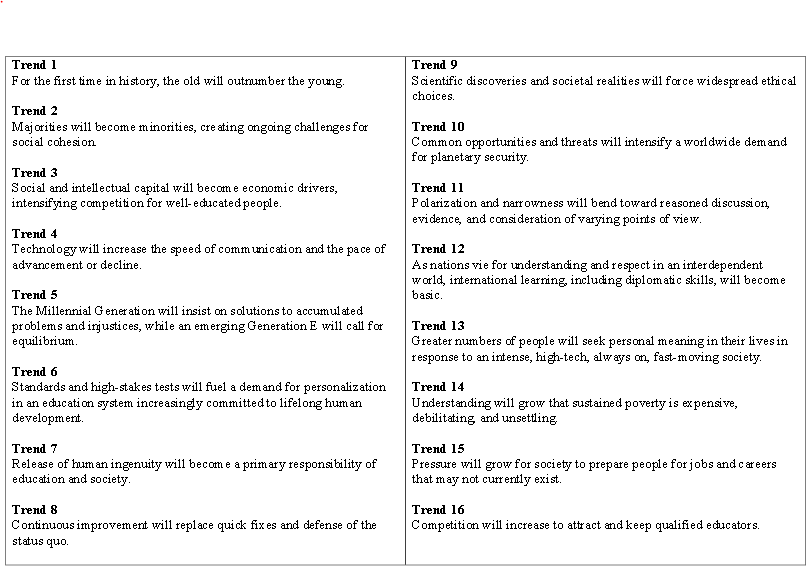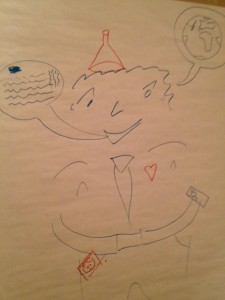Throughout this past school, the concept of “starting with the “Why” has consistently appeared in various settings. The mantra is emphasized in meetings, promoted by AVID leadership in our county, referenced at the NCSS meeting in Seattle, and is a guiding principle around professional development. At the orientation meeting for judges at the the National History Day tournament, an explanation of “Why” was used identifying our 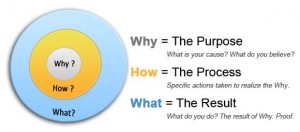 collective enjoyment of history and support for students’ engaging with the past. I researched the concept and its “Golden Circle” approach to leadership. Applying this to education is, I argue, is essential to the professionalism and artistry of our field. We should all be able to answer the “Why” for our personal practices, content area, school mission, and national purpose… and provide that answer to our students and their parents.
collective enjoyment of history and support for students’ engaging with the past. I researched the concept and its “Golden Circle” approach to leadership. Applying this to education is, I argue, is essential to the professionalism and artistry of our field. We should all be able to answer the “Why” for our personal practices, content area, school mission, and national purpose… and provide that answer to our students and their parents.
Now that summer is upon us, it is a perfect time to reflect on the Why.
The Golden Circle
Beginning as a student in anthropology, Simon Sinek turned his fascination with people into a career of convincing people to do what inspires them. His earliest work was in advertising, moving on to start Sinek Partners in 2002, but he suddenly lost his passion despite earning solid income. Through his struggle to rediscover his excitement about life and work, he made some profound realizations and began his helping his friends and their friends to find their “why” — at first charging just $100, person by person. Never planning to write a book, he penned Start With Why simply as a way to distribute his message
The 10 theories below are obviously not a comprehensive list. They represent what happens to be synthesizing in my current experiences, reading, and discussions with colleagues and my PLN. They help me answer the Why which in turn guide the How and What of history and social studies education. What theories would you add to the list? What do you think of these? Enjoy!
- Carol Dweck – Mind Set :
Mindset is a simple idea discovered by world-renowned Stanford University psychologist Carol Dweck in decades of research on achievement and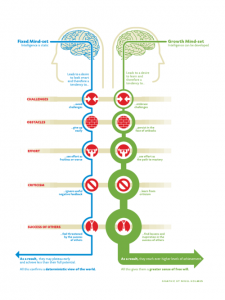 success—a simple idea that makes all the difference.In a fixed mindset, people believe their basic qualities, like their intelligence or talent, are simply fixed traits. They spend their time documenting their intelligence or talent instead of developing them. They also believe that talent alone creates success—without effort. They’re wrong.In a growth mindset, people believe that their most basic abilities can be developed through dedication and hard work—brains and talent are just the starting point. This view creates a love of learning and a resilience that is essential for great accomplishment. Virtually all great people have had these qualities.Teaching a growth mindset creates motivation and productivity in the worlds of business, education, and sports. It enhances relationships.
success—a simple idea that makes all the difference.In a fixed mindset, people believe their basic qualities, like their intelligence or talent, are simply fixed traits. They spend their time documenting their intelligence or talent instead of developing them. They also believe that talent alone creates success—without effort. They’re wrong.In a growth mindset, people believe that their most basic abilities can be developed through dedication and hard work—brains and talent are just the starting point. This view creates a love of learning and a resilience that is essential for great accomplishment. Virtually all great people have had these qualities.Teaching a growth mindset creates motivation and productivity in the worlds of business, education, and sports. It enhances relationships.
Test your Mindset here!
2. Daniel Goleman – Emotional Intelligence: The phrase, or its casual shorthand EQ, argues that IQ, or conventional intelligence, is too narrow; that there are wider areas of Emotional Intelligence that dictate and 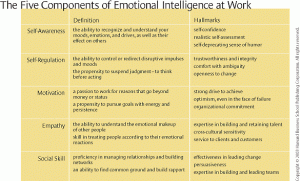 enable how successful we are. Success requires more than IQ (Intelligence Quotient), which has tended to be the traditional measure of intelligence, ignoring essential behavioural and character elements. We’ve all met people who are academically brilliant and yet are socially and inter-personally inept. And we know that despite possessing a high IQ rating, success does not automatically follow.
enable how successful we are. Success requires more than IQ (Intelligence Quotient), which has tended to be the traditional measure of intelligence, ignoring essential behavioural and character elements. We’ve all met people who are academically brilliant and yet are socially and inter-personally inept. And we know that despite possessing a high IQ rating, success does not automatically follow.
“Most gratifying for me has been how ardently the concept has been embraced by educators, in the form of programs in “social and emotional learning or SEL. Back in 1995 I was able to find only a handful of such programs teaching emotional intelligence skills to children. Now, a decade later, tens of thousands of schools worldwide offer children SEL. In the United States many districts and even entire states currently make SEL curriculum requirement, mandating that just as students must attain a certain level of competence in math and language, so too should they master these essential skills for living.”
3. Sugata Mitra – Minimally Invasive Education: MIE is a pedagogic method that uses the learning environment to generate an adequate level of motivation to induce learning in groups of children, with minimal, or no, intervention by a teacher. Mitra suggests this approach develops “functional literacy” in students and demands reflection on how time and money is being spent in education: “If computer literacy is defined as turning a computer on and off and doing the basic functions, then this method allows that kind of computer literacy to be achieved with no formal instruction. Therefore any formal instruction for that kind of education is a waste of time and money. You can use that time and money to have a teacher teach something else that children cannot learn on their own.”
Minimally Invasive Education in school asserts there are many ways to study and learn. It argues that learning is a process you do, not a process that is done to you. Another advantage is that MIE ensures that children themselves take ownership of the Learning Station by forming self-organized groups who learn on their own. Finally an unsupervised setting ensures that the entire process of learning is learner-centric and is driven by a child’s natural curiosity.
Mitra has recently announced the Self Organized Learning Environment (SOLE). SOLE is a place where children can work in groups, access the internet and other software, follow up on a class activity or project or take them where their interests lead them. Download the toolkit and try it out.
4. Phil Schlectly – Engagement Theory: Schlectly focuses attention on student motivation and the strategies needed to increase the 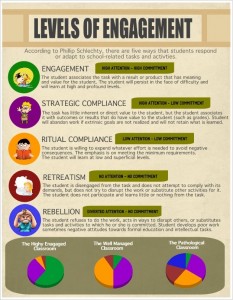 prospect that schools and teachers will be positioned to increase the presence of engaging tasks and activities in the routine life of the school. The Theory of Engagement proceeds from a number of assumptions. The most critical ones focus on the way school tasks and activities are designed and student decisions regarding the personal consequences of doing the task assigned or participating in the activity. The use of technology, although commonly supposed, is not a requirement for Schlectly’s theory. In fact, the technology – engagement relationship has spawned its own body of research and literature. In turn, the theory looks at the effectiveness of teachers leading students through discussions and action planning. Letting students take control of their learning, and use the school as a network, would definitely be a step in a different direction. Schlectly also mentions “that relationships, and the work assigned directly impacts student’s performance.”
prospect that schools and teachers will be positioned to increase the presence of engaging tasks and activities in the routine life of the school. The Theory of Engagement proceeds from a number of assumptions. The most critical ones focus on the way school tasks and activities are designed and student decisions regarding the personal consequences of doing the task assigned or participating in the activity. The use of technology, although commonly supposed, is not a requirement for Schlectly’s theory. In fact, the technology – engagement relationship has spawned its own body of research and literature. In turn, the theory looks at the effectiveness of teachers leading students through discussions and action planning. Letting students take control of their learning, and use the school as a network, would definitely be a step in a different direction. Schlectly also mentions “that relationships, and the work assigned directly impacts student’s performance.”
5. Paulo Freire – Critical Pedagogy: Critical Pedagogy is a domain of education and research that studies the social, cultural, political, economic, and cognitive dynamics of teaching and learning. Critical Pedagogy emphasizes the impact of power relationships in the educational process. Emerging in the late 1960s with the work of Brazilian educator, Paulo Freire, Critical Pedagogy has evolved as a cross-disciplinary field. “Critical Pedagogy would never find it sufficient to reform the habits of thought of thinkers, however effectively, without challenging and transforming the institutions, ideologies, and relations that engender distorted, oppressed thinking in the first place — not as an  additional act beyond the pedagogical one, but as an inseparable part of it. The method of Critical Pedagogy for Freire involves, to use his phrase, “reading the world” as well as “reading the word” (Freire & Macedo 1987). Part of developing a critical consciousness, as noted above, is critiquing the social relations, social institutions, and social traditions that create and maintain conditions of oppression. For Freire, the teaching of literacy is a primary form of cultural action, and as action it must “relate speaking the word to transforming reality”(Freire 1970a, 4).
additional act beyond the pedagogical one, but as an inseparable part of it. The method of Critical Pedagogy for Freire involves, to use his phrase, “reading the world” as well as “reading the word” (Freire & Macedo 1987). Part of developing a critical consciousness, as noted above, is critiquing the social relations, social institutions, and social traditions that create and maintain conditions of oppression. For Freire, the teaching of literacy is a primary form of cultural action, and as action it must “relate speaking the word to transforming reality”(Freire 1970a, 4).
6. George Siemens – Connectivism: At the core, connectivism is a form of experiential learning which prioritizes the set of connections formed by actions and experience over the idea that knowledge is propositional. It shares with some other theories a core proposition, that knowledge is not acquired, as though it were a thing. Knowledge is, on this theory, literally the set of connections formed by actions and experience. One aspect of connectivism is its central metaphor of a network with nodes and connections.In this metaphor, a node is anything that can be connected to another node such as an organization, information, data, feelings and images. Connectivism sees learning as the process of creating connections and elaborating a network. Not all connections are of equal strength.
The starting point of connectivism is the individual. Personal knowledge is comprised of a network, which feeds into organizations and institutions, which in turn feed back into the network, and then continue to provide learning to individual. This cycle of knowledge development (personal to network to organization) allows learners to remain current in their field through the connections they have formed.
7. Lev Vykotsky – Social Constructivis Theory: Vykotsky, when juxtaposed to Piaget, emphasized the social interactions between students and teachers. In short positive relationships are significant to learning.
His Zone of Proximal Development (ZPD) and More Knowledgeable Other (MKO) are two of Vykotsky’s major legacies found in contemporary education. ZPD addresses the difference between what a child can achieve independently and what a child can achieve with guidance and encouragement from a skilled partner. Vykotsky sees the area in the ZPD as where the most sensitive instruction or guidance should be given – allowing the child to develop skills they will then use on their own – developing higher mental functions.
Vygotsky believed during the learning process children first learn by imitating adults. In the beginning, children are unable to complete a particular task without assistance. Over time, this child may be able to complete more complex tasks with adult assistance because the ZPD of a child isn’t stagnant, it continuously changes as he or she conquers increasingly difficult work over time. Focusing more on education, ZPD can be useful to educators because it should remind them how students can be expanded to reach goals with or without adult direction and support. This is often referred to as “Scaffolding.”
The MKO strongly relates to ZPD: “it refers to someone who has a better understanding or a higher ability level than the learner, with respect to a particular task, process, or concept.
Although the implication is that the MKO is a teacher or an older adult, this is not necessarily the case. Many times, a child’s peers or an adult’s children may be the individuals with more knowledge or experience. In fact, the MKO need not be a person at all (website, video). The key to MKOs is that they must have (or be programmed with) more knowledge about the topic being learned than the learner does.”
8. Gary Marx – 16 Trends: Sixteen Trends … Their Profound Impact on Our Future, and Future Focused Leadership … Preparing Schools, Students, and Communities for Tomorrow’s Realities, lays out evidence for major trends and then speculates on their profound implications for society at large and education systems, such as schools and colleges, in particular. He adds, “We have a distinct choice–we can simply defend what we have…or we can create what we need to get our students, our schools, and our communities ready for a fast-changing world.”
His new book will build upon his 16 trends. Marx states “The next generation in the trends series focuses on political, economic, social, technological, demographic, and environmental trends. Among more than 20 societal forces that will get special attention in the upcoming book are identity and privacy, sustainability, scarcity vs. abundance, and energy. They are in addition to dramatic developments in aging, diversity, the flow of generations, technology, interdependence, and the environment, to name a few. Massive trends that impact the whole of society provide an outstanding launch pad for active learning, project-based education, real-world education, teaching thinking and reasoning/problem solving skills, and learning through inquiry. Students are drawn to using futures tools, such as trend analysis, issue analysis, and gap analysis because each one comes with an invitation to consider implications for shaping their own futures. The new book will be published by Education Week Press.
9. Howard Gardner – Multiple Intelligences: Arguably the most influential educational movement of recent educational practice, MI has had to contend against rampant misconcpetions and faculty application of Gardner’s theory. I have come across this numerous times in my career. So, please, be on guard when practioners reference Gardner. Gardner defined the first seven intelligences in Frames of Mind in 1983. He added two more, Naturalist and Existentialist, in Intelligence Reframed in 1999. “Based on his study of many people from many different walks of life in everyday circumstances and professions, Gardner developed the theory of multiple intelligences. Gardner’s MI Theory challenged traditional beliefs in the fields of education and cognitive science. According to a traditional definition, intelligence is a uniform cognitive capacity people are born with. This capacity can be easily measured by short-answer tests. According to Gardner, intelligence is:
- The ability to create an effective product or offer a service that is valued in a culture
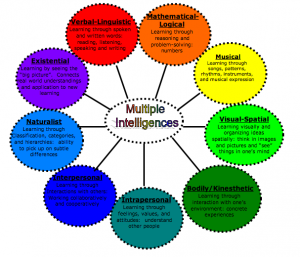
- A set of skills that make it possible for a person to solve problems in life
- The potential for finding or creating solutions for problems, which involves gathering new knowledge
In addition, Gardner claims that:
- All human beings possess all intelligences in varying amounts
- Each person has a different intellectual composition
- We can improve education by addressing the multiple intelligences of our students
- These intelligences are located in different areas of the brain and can either work independently or together
- These intelligences may define the human species
- Multiple intelligences can be nurtured and strengthened, or ignored and weakened
- Each individual has nine intelligences (and maybe more to be discovered)
10. Benjamin Bloom/Lorin Anderson – Revised Taxonomy: “In 1956, Benjamin Bloom headed a group of educational psychologists who developed a classification of levels of intellectual behavior important in learning. During the 1990’s a new group of cognitive psychologists, lead by Lorin Anderson (a former student of Bloom), updated the taxonomy to reflect relevance to 21st century work. The change from nouns to verbs associated with each level is significant.” It is important to know that the list of action words that are typically associated with each level does not guarantee that students are engaged at that level. Specific expectations and follow up questioning is essential to the process. For example, asking students to “Compare and Contrast two images” does not automatically place student thought at the “Analysis” level. More is needed from the teacher. For example “Compare and Contrast two images. Explain your 3-4 findings that address the economic and social contexts of both images. Which do you find more appealing and why?”
(a former student of Bloom), updated the taxonomy to reflect relevance to 21st century work. The change from nouns to verbs associated with each level is significant.” It is important to know that the list of action words that are typically associated with each level does not guarantee that students are engaged at that level. Specific expectations and follow up questioning is essential to the process. For example, asking students to “Compare and Contrast two images” does not automatically place student thought at the “Analysis” level. More is needed from the teacher. For example “Compare and Contrast two images. Explain your 3-4 findings that address the economic and social contexts of both images. Which do you find more appealing and why?”
Debate about the need to master a lower level of the taxonomy prior to advancing to the next one is prevalent. Can student’s engage with a higher level first or is the lowest level the entry point for Bloom? My belief is yes students can be engaged at higher levels first. In fact the “hierarchy” dimension of Bloom has been challenged and conceived as a fluid network of thought and action.

